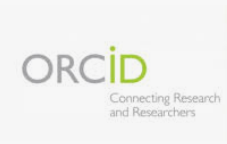Pityriasis rubra pilaris. Presentation of cases
Keywords:
NEVUS, PITYRIASIS RUBRA PILARIS, VITAMIN A, OINTMENTS, PETROLATUM, SALICYLIC ACID, FOOD AND NUTRITION EDUCATION, HUMANS, FEMALE, CHILD, ADULT, CASE REPORTSAbstract
We presented the cases of two patients with dermatologic lesions, where there it is clinic- histopathologic correlation, of Pityriasis rubra pilaris. The intention of this work is taking into account this dermatosis in the dermatologic practice. To achieve that our objectives were: allowing the comprehension of this entity, contributing to the differential diagnosis with other conditions like seborrheic dermatitis, palmoplantar keratoderma, psoriasis and others. The histological picture of the studied dermatosis is characteristic, and there should be introduced in the diet foods rich in vitamin A, beta carotenes and sulfur, because the alimentary fact plays an important role in those conditions where the etiology by vitamins or other oligo-element deficit is present. We reviewed clinical aspects, the association with other diseases, the treatment of this dermatosis. We used the randomized, longitudinal method, corroborating the diagnostic by patient's skin biopsy. The studied patients were: ARG, white, female, 5-years-old patient send by the podiatrist because she had lesions in yellow macula hypochromic- papular plates, located in extension surfaces of arms and legs; LSG, white, female, 19-years-old patient send presenting lesions in macula- hypochromic papular- squamous plaques with diffuse rims, located in the right thigh and leg, stating diffuse alopecia of the scalp. The indicated treatment was an ointment with reductive, salicylic acid and vaseline. They were advised to eat foods rich in vitamin A or beta carotenes and sulfur, insisting in this part of the treatment because they had antecedents of not eating these foods. We have followed the evolution of these patients for ten years without relapses, having the patients kept the oriented dietetic regime.Downloads
How to Cite
Issue
Section
License
All content published in this journal is Open Access, distributed under the terms of the CC BY-NC 4.0 License.
It allows:
- Copy and redistribute published material in any medium or format.
- Adapt the content.
This will be done under the following terms:
- Attribute the authors' credits and indicate whether changes were made, in which case it must be in a reasonable way.
- Non-commercial use.
- Recognize the journal where it is published.
The copyrights of each article are maintained, without restrictions.





